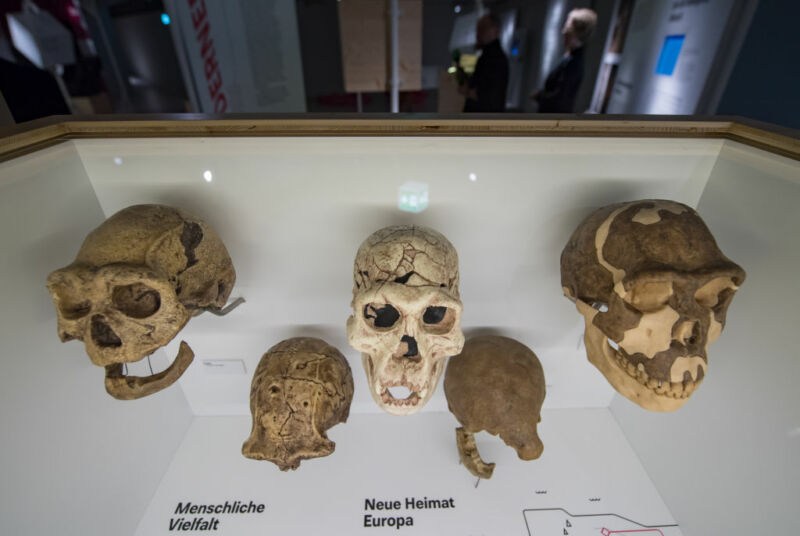Neanderthals may have interbred with a much older human lineage

Enlarge / OK, which one of you is the father? (credit: picture alliance / Getty Images)
Shortly before the publication of the first Neanderthal genome, a number of researchers had seen hints that there might be something strange lurking in the statistics of the human genome. The publication of the genome erased any doubts about these hints and provided a clear identity for the strangeness: a few percent of the bases in European and Asian populations came from our now-extinct relatives.
But what if we didn't have the certainty provided by the Neanderthal genome? That's the situation we find ourselves in now, as several studies have recently identified "ghost lineages"-hints of branches in the human family tree for which we have no DNA sequence but find their imprint on the genomes of populations alive today. The existence of these ghost lineages is based on statistical arguments, so it's very dependent upon statistical methods and underlying assumptions, which are prone to being the subject of disagreement within the community that studies human evolution.
Now, researchers at the University of Utah are arguing that they have evidence of a very old ghost lineage contributing to Neanderthals and Denisovans (and so, indirectly, possibly to us). This is a claim that others in the field will undoubtedly contest, in part because the evidence comes from an analysis that would also revise the dates of many key events in human evolution. But it's interesting to look at in light of how scientists deal with a question that may never be answered by definitive data.
Read 19 remaining paragraphs | Comments